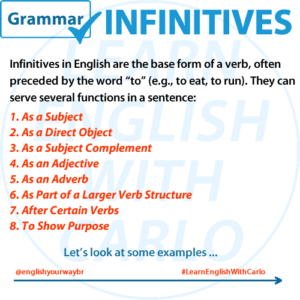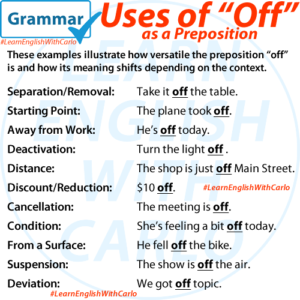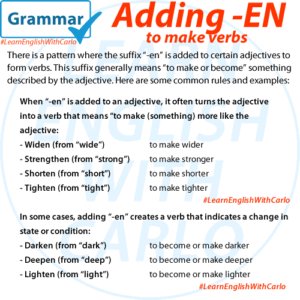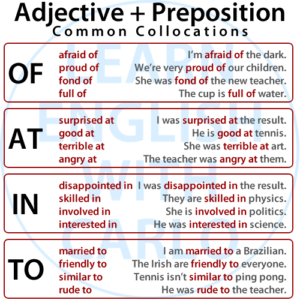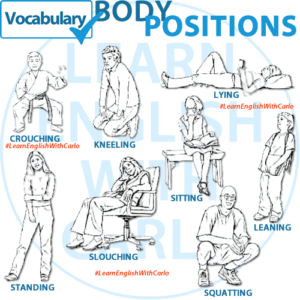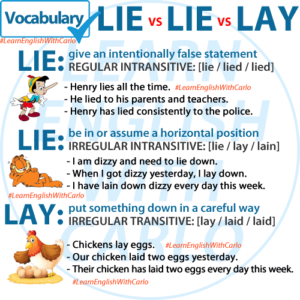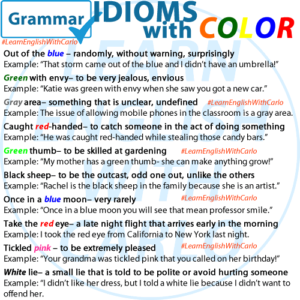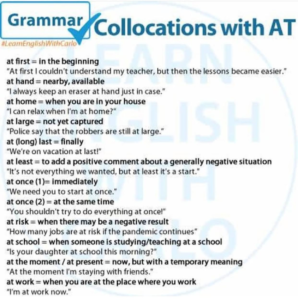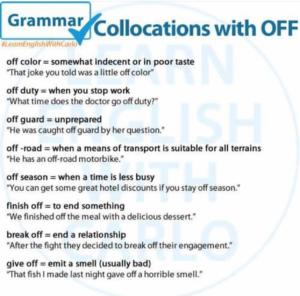Infinitives are the base form of a verb, usually preceded by “to” (e.g., to learn, to explore, to be). They’re incredibly versatile and are used in many ways to express purpose, intention, emotion, and more. In this guide, we’ll break down the main uses of infinitives in English grammar, with examples that will make it …
Category: INSTAGRAM
Images I've posted to Instagram
Permanent link to this article: https://englishyourway.com.br/infinitives-in-english/
May 16
Uses of “Off” as a Preposition
The preposition “off” has many different uses in English, depending on the context. Here’s a breakdown of its main uses: 1. Separation or Removal 2. Starting Point (in Time or Space) 3. Away from Work or Duty 4. Deactivation or Disconnection 5. Distance or Separation 6. Reduced or Discounted 7. Cancellation or Suspension 8. Condition …
Permanent link to this article: https://englishyourway.com.br/uses-of-off-preposition/
May 15
Grammar: Verb Suffix -EN
Turn Adjectives & Nouns into Verbs! Did you know you can add -EN to some adjectives and nouns to create verbs? This is a powerful and useful suffix in English. It often means “to make” or “to become” something. In this post, we’ll look at how this suffix works and give you plenty of examples …
Permanent link to this article: https://englishyourway.com.br/verb-suffix-en/
May 13
GRAMMAR Adjective + Preposition
Adjectives are words used to describe a person, place, or thing, for example, The tall man in the red shirt is a friend of mine. We drove along a quiet road until reaching a small town. I’m reading an interesting book. Prepositions are words used to connect two ideas or to demonstrate the relationship between …
Permanent link to this article: https://englishyourway.com.br/grammar-adjective-preposition-2/
May 12
VOCABULARY – Body Positions
We place our bodies in different positions depending on what we are doing. Do you know the names of the different positions? One of my INSTAGRAM followers asked to use each one in a sentence, so here you go: Can you think of any other positions? If you have any questions or doubts, please ask …
Permanent link to this article: https://englishyourway.com.br/body-positions-vocabulary/
May 04
Lie vs. Lie vs. Lay: Understanding the Differences
English can be tricky, especially when it comes to words that sound the same but have different meanings and uses. A common source of confusion is the difference between “lie,” “lie,” and “lay.” These three words are often mixed up, but understanding their meanings and how they are used can help you use them correctly. …
Permanent link to this article: https://englishyourway.com.br/lie-vs-lie-vs-lay-understanding-the-differences/
Apr 28
GRAMMAR – Idioms with color
Out of the blue – randomly, without warning, surprisinglyExample: “That storm came out of the blue and I didn’t have an umbrella!” Green with envy– to be very jealous, enviousExample: “Katie was green with envy when she saw you got a new car for your birthday.” Gray area – something that is unclear, undefinedExample: The …
Permanent link to this article: https://englishyourway.com.br/grammar-idioms-with-color/
Apr 26
GRAMMAR – Collocations with AT
The preposition “at” is used in many common expressions in English, each with unique meanings. Below, you’ll find clear explanations and examples to help you understand and use these expressions confidently. Let’s explore! 1. At First = In the beginning This expression describes the initial phase of something, often followed by a change. Examples: 2. …
Permanent link to this article: https://englishyourway.com.br/grammar-collocations-with-at/
Apr 25
GRAMMAR – Collocations with off
The English preposition “off” has a variety of meanings and uses, often forming part of idiomatic expressions and collocations. In this blog post, we’ll explore some common expressions with “off,” provide clear definitions, and share examples for each. Let’s dive in! 1. Off Color Definition: Something that is somewhat indecent, inappropriate, or in poor taste.Examples: …
Permanent link to this article: https://englishyourway.com.br/grammar-collocations-with-off/
Apr 22
Understanding SO, SUCH, and TOO in English
The words so, such, and too are often confused by English learners because they all express emphasis or intensity. However, they follow different grammatical patterns and are used in distinct ways. Let’s break it down with examples and explanations. 1. SO So is used with adjectives and adverbs to indicate a high degree, often followed …
Permanent link to this article: https://englishyourway.com.br/using-so-such-too-in-english/

